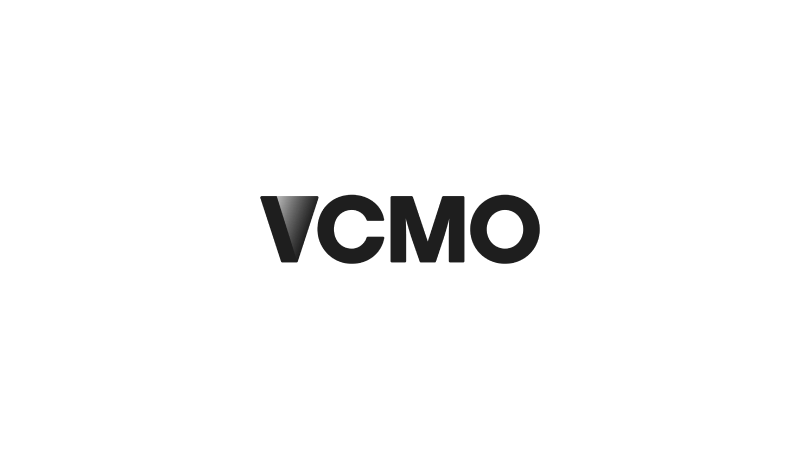Explore when to hire a Fractional CMO, an agency—or both—for maximum marketing impact.
Introduction: Strategy vs. Execution — Getting the Model Right
For many businesses at a growth inflection point, the question is not whether to invest in marketing, but how to structure that investment. Two of the most common options—engaging a Fractional Chief Marketing Officer (CMO) or hiring a marketing agency—are often discussed in the same breath. Yet in reality, they address fundamentally different challenges. One provides leadership, vision, and accountability at the executive level; the other delivers tactical execution and channel-specific expertise.
The distinction matters. CEOs and investors frequently underestimate the gap between strategy and execution, leading to mismatched expectations and disappointing outcomes. Hiring an agency without clear strategic direction can result in fragmented campaigns, escalating costs, and little commercial traction. Conversely, appointing a Fractional CMO without sufficient delivery capacity can leave strategies under-executed and momentum stalled.
This article explores the differences between the two models, when to choose each, and why in many cases the most effective solution is a combination of both. By understanding how strategy and execution interact, business leaders can make informed decisions that not only solve immediate marketing challenges but also strengthen their long-term growth trajectory.
When to Choose a Fractional CMO
A Fractional CMO is most valuable when a business requires senior-level marketing leadership but cannot justify or attract a full-time executive. This scenario often arises at inflection points where growth ambitions outpace current marketing capability. For example, a scaleup preparing for Series B funding may need to demonstrate a credible go-to-market strategy; a mid-market company facing revenue stagnation may require fresh positioning; or a PE-backed firm nearing exit may need disciplined commercial storytelling to maximise enterprise value.
In each case, the challenge is not the absence of tactical activity, but the absence of leadership. A Fractional CMO brings the vision, structure, and accountability required to align marketing with commercial objectives. They diagnose gaps in capability, design strategies that connect marketing spend to revenue outcomes, and embed systems that raise team performance. Importantly, their role is not just to deliver results in the moment but to build internal capacity—mentoring staff, refining processes, and leaving behind a stronger function than they inherited.
For businesses where growth has plateaued, leadership bandwidth is stretched, or marketing feels disjointed, a Fractional CMO provides the strategic compass needed to reorient the business toward sustainable performance.
“Fractional CMOs are not hired to run campaigns; they are hired to change trajectories. Their value lies in turning marketing from fragmented activity into a disciplined driver of growth.”
Rachael Wheatley - Chartered Fractional CMO, VCMO
Key Differences at a Glance
At a surface level, both a Fractional CMO and a marketing agency provide external expertise. Yet their roles, accountabilities, and impact differ fundamentally. The table below provides a quick comparison:
The contrast lies in strategic leadership versus tactical execution. A Fractional CMO shapes the roadmap, aligning marketing with commercial strategy and ensuring accountability at the top table. An agency, by design, focuses on delivery within its defined remit. Agencies may excel at depth—specialist SEO, paid search, or creative execution—but they rarely assume responsibility for enterprise-level results.
Both models have merit, but understanding these differences ensures businesses engage the right partner for the right challenge.
“The distinction is simple but profound: agencies execute, CMOs lead. One delivers activity, the other delivers accountability.”
Lydia McClelland - Chartered Fractional CMO, VCMO
When to Choose an Agency
There are many situations where a marketing agency is the most appropriate partner. Agencies bring depth of expertise in specific channels—whether paid media, SEO, content production, or creative design—that few in-house teams can replicate. For businesses with clear strategic direction but limited executional bandwidth, agencies provide the tactical muscle to bring campaigns to life at scale.
Agencies are also useful in bridging temporary capability gaps. A company launching a new product, for example, may require immediate support in digital advertising or content development that the internal team is not equipped to deliver. Likewise, firms entering new markets may need specialist knowledge of local media channels, regulatory environments, or cultural nuances—areas where agencies often excel.
The agency model is particularly effective when output is the primary requirement. If the brief is well defined, success can be measured in impressions, clicks, or leads, and timelines are short, agencies deliver predictable value. Where agencies are less effective is in situations requiring strategic alignment or cross-functional integration. Without executive-level leadership, agencies can only optimise the channels they control, not the broader marketing system. For businesses with executional needs but strong strategic clarity, however, agencies remain indispensable.
“Agencies excel when the brief is clear, the objective is tactical, and speed is paramount. They are powerful execution partners—but they cannot substitute for leadership.”
The Case for a Combined Approach
While the choice between a Fractional CMO and an agency is often framed as either/or, in practice the most effective solution for many businesses is a combination of both. The Fractional CMO sets the strategy—defining positioning, clarifying the customer journey, aligning budget to growth objectives, and ensuring marketing activity is tied directly to commercial outcomes. Agencies then provide the tactical depth and executional capacity to deliver that strategy across specific channels.
This division of labour creates both clarity and accountability. The CMO operates as the architect, ensuring marketing is coherent, commercially relevant, and embedded in leadership decisions. Agencies act as the builders, applying their technical expertise in areas such as SEO, paid media, or creative production. Crucially, the CMO manages the agency relationship on behalf of the business, ensuring performance is measured against outcomes that matter—pipeline contribution, revenue growth, and customer lifetime value—rather than channel-level vanity metrics.
For scaling businesses, this combined model often delivers the best of both worlds: strategic leadership at the top table and executional power in the market. It minimises risk, maximises impact, and ensures that marketing is not just active, but effective.
Conclusion: Matching the Solution to the Business Need
The decision between a Fractional CMO and a marketing agency is not about choosing one as universally superior to the other. It is about aligning the right model to the right business challenge. A Fractional CMO provides the strategic compass—executive-level leadership that shapes vision, embeds accountability, and ensures that marketing spend translates into commercial outcomes. An agency delivers tactical execution, depth of channel expertise, and the capacity to scale campaigns quickly and efficiently.
Confusion arises when businesses conflate the two. Expecting an agency to provide board-level strategy often results in fragmented activity and missed opportunities. Likewise, relying on a Fractional CMO without adequate delivery support can leave strategies unimplemented and momentum lost. The key is to recognise that strategy and execution are complementary, not interchangeable.
For many organisations, the most effective solution lies in combination. With a Fractional CMO directing the roadmap and agencies executing with precision, businesses can achieve both clarity and capability. The result is a marketing function that is not only active but aligned, not only efficient but commercially accountable. Choosing the right fit is less about outsourcing and more about investing in the leadership and executional model that drives sustainable growth.
Suggested Further Reading
Fractional CMO vs Full-Time CMO: Pros and Cons
How to Choose a Fractional CMO for Your Business: A Comprehensive Guide
How To Integrate a Fractional CMO Into Your Business
How to Measure the ROI of a Fractional CMO
About VCMO
VCMO is a UK-based provider of fractional marketing services, supporting B2B SMEs—ranging from funded scale-ups to mid-tier and private equity-backed businesses—through key moments of growth and transformation. Its Chartered Fractional CMOs and SOSTAC® certified planners embed strategic marketing leadership into organisations navigating product launches, new market entry, acquisitions, and leadership gaps.
What’s a Rich Text element?
The rich text element allows you to create and format headings, paragraphs, blockquotes, images, and video all in one place instead of having to add and format them individually. Just double-click and easily create content.
- By following these tips, you can make sure you’re noticed on LinkedIn and start building the professional connections you need to further your career.
-

Static and dynamic content editing
A rich text element can be used with static or dynamic content. For static content, just drop it into any page and begin editing. For dynamic content, add a rich text field to any collection and then connect a rich text element to that field in the settings panel. Voila!
How to customize formatting for each rich text
Headings, paragraphs, blockquotes, figures, images, and figure captions can all be styled after a class is added to the rich text element using the "When inside of" nested selector system.


Ready to take your marketing to the next level? Let us help you get there.
Subscribe to Our Newsletter
Fractional Edge is our montly newsletter sharing expert opinion on the latest trends in fractional leadership, curated marketing content from leading sources, VCMO events, and much more. Subscribing is quick — just add your name and email.











.jpg)





